I was recently at the Malverns Classic bike festival where as well as racing, exhibitors, trials demonstrations, dirt jump competitions, balance bike racing, dodgems, and live music, there is also a retro bike show. Each year, people travel the length and breadth of the country to show off their retro bikes. Some looking like they have just come of the showroom floor, others still ridden every day. 26” ain’t dead yet!
The retro show has to be one of my favourite parts of the festival as it conjures up immense feelings of nostalgia and joy. In 1996, I was a young and avid reader of MBUK magazine. I would see the latest tech being ridden and advertised in the mags but didn’t ever have the funds to go and buy.
Getting up close and personal with the old bike tech gives a timely reminder of how much bike tech has moved on a lot in the last couple of decades, with many products being outdated and consigned to the history books.
If you’re new to mountain biking, this one is for you, as we check out nine forgotten technologies which once upon a time, adorned the eyes of mountain bike enthusiasts across the world.
V brakes
Brake Technology took a big step forwards in the 1988 when a young 17 year old boy named Ben Capron designed the side pull brake. Like anyone who has ever ridden traditional cantilever brakes, he was fed up with their inefficient performance so worked on his own design. By 1995, Shimano had adopted the non-patented design and called it the V brake. When compared with traditional cantilever brakes, V brakes offered colossal performance. Many other brands followed suit and the same design principle first used by Capron, are still being used to this day for entry level `and kids bikes today. V brakes of course met their match with more modern hydraulic disc systems which offer more power, more consistency and perhaps more importantly zero rim wear. These days, V brakes would not even be considered as an option for performance bikes. Although V brake technology is firmly in the past, Capron’s innovation will always spark fond memories for riders in the mid to late 90’s. Gone, but not forgotten. Thanks Mr Capron!

DCD (Dave’s chain device)
Anyone riding a modem 1x system will probably not remember the last time they had to pick up a dropped chain mid run. 1x systems adopt a narrow wide chain ring which grips the chain into the ring which pretty much eliminates chain drop altogether. This paired with a clutch system rear mech means that dropping chains is a thing of the past. But, what happened before this? Well, one way of applying more tension to a chain was to add a DCD device. They seemed to work relatively well but have nothing on modern setups
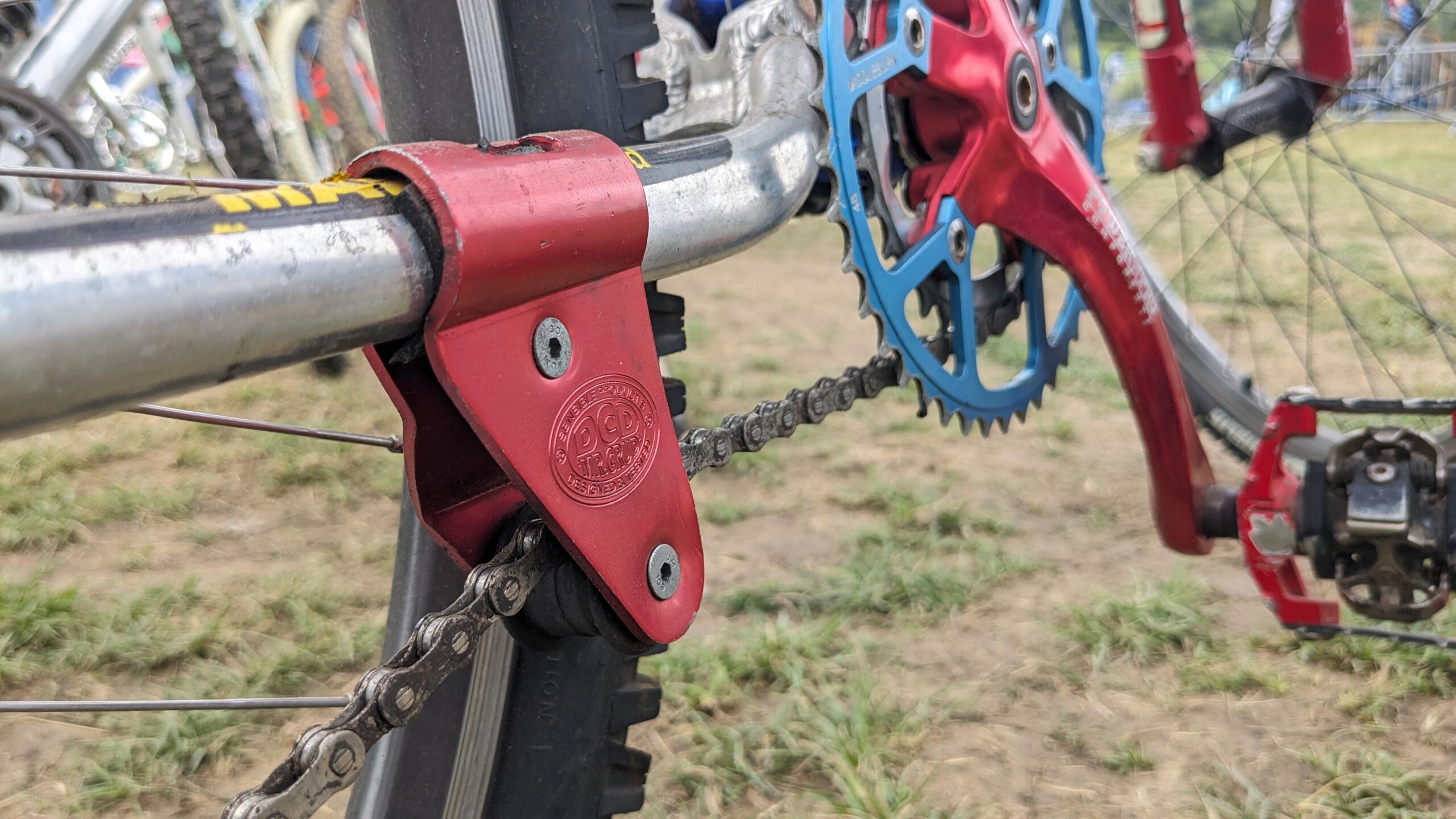
Retro fit handle bar bracing
Mountain biking is hard on your bike, it always has been. Parts do fail, but having confidence in your control points is of utmost importance. During the 90’s, it was not uncommon for mountain bike riser bars to come fitted with a cross brace for additional strength. You could even retro fit cross bracing to your bars!
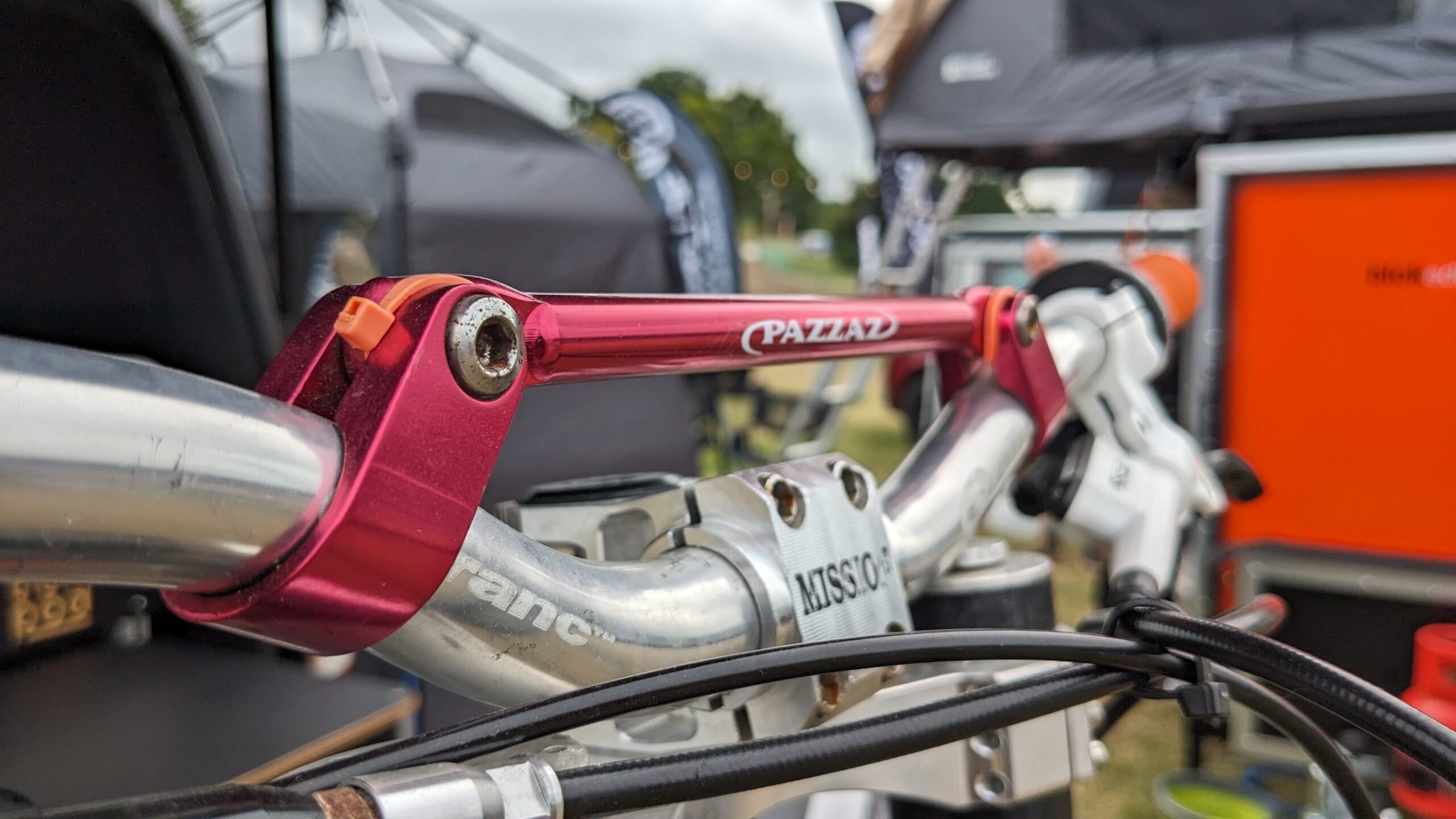
Brake Boosters
With the advent of V brakes in the mid 90’s, bike frames now had to deal with frame flex as the V brake would essentially be pulling from the side as opposed to upwards towards the seatpost. One solution to this problem which required no frame modifications, was to add a metal brake booster the brake mounting points. The booster would not allow the brake mounting points to flex outwards, thus improving braking performance. They were relatively cheap, nearly always anodized (unless you bought the holy grail of boosters, the Carbon fibre Shimano booster) and looked cool! What’s not to like?!
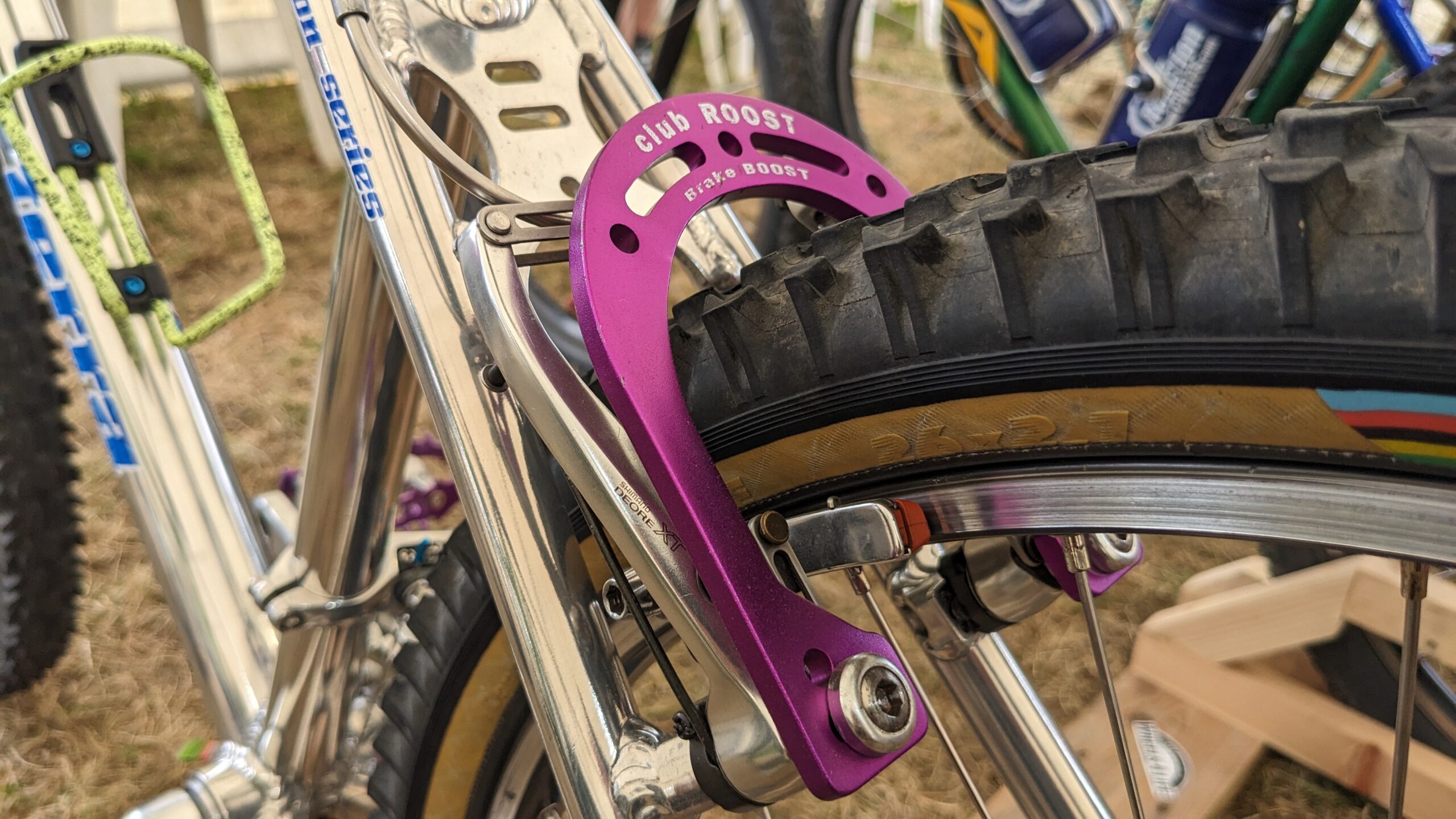
Grip shift
In the 1980’s, Shimano pretty much ruled the roost when it came to mountain bike components. Thumb shifters were the norm but although their products worked well, there was room for improvement. In 1988, SRAM introduced the Grip Shift (originally known as Twist shit) gear change which was then adapted for mountain bikes in 1991. Gripshift had its fair share of reliability issues, amongst other issues such as its compatibility with other components (brakes and grips) but my goodness, it was an exciting time and a step in the right direction for mountain bike shifting. Trigger based systems which were and still are used by Shimano and SRAM, ultimately proved more reliable and easier to use, which marked the end of the road for Grip shift. Sad times indeed!
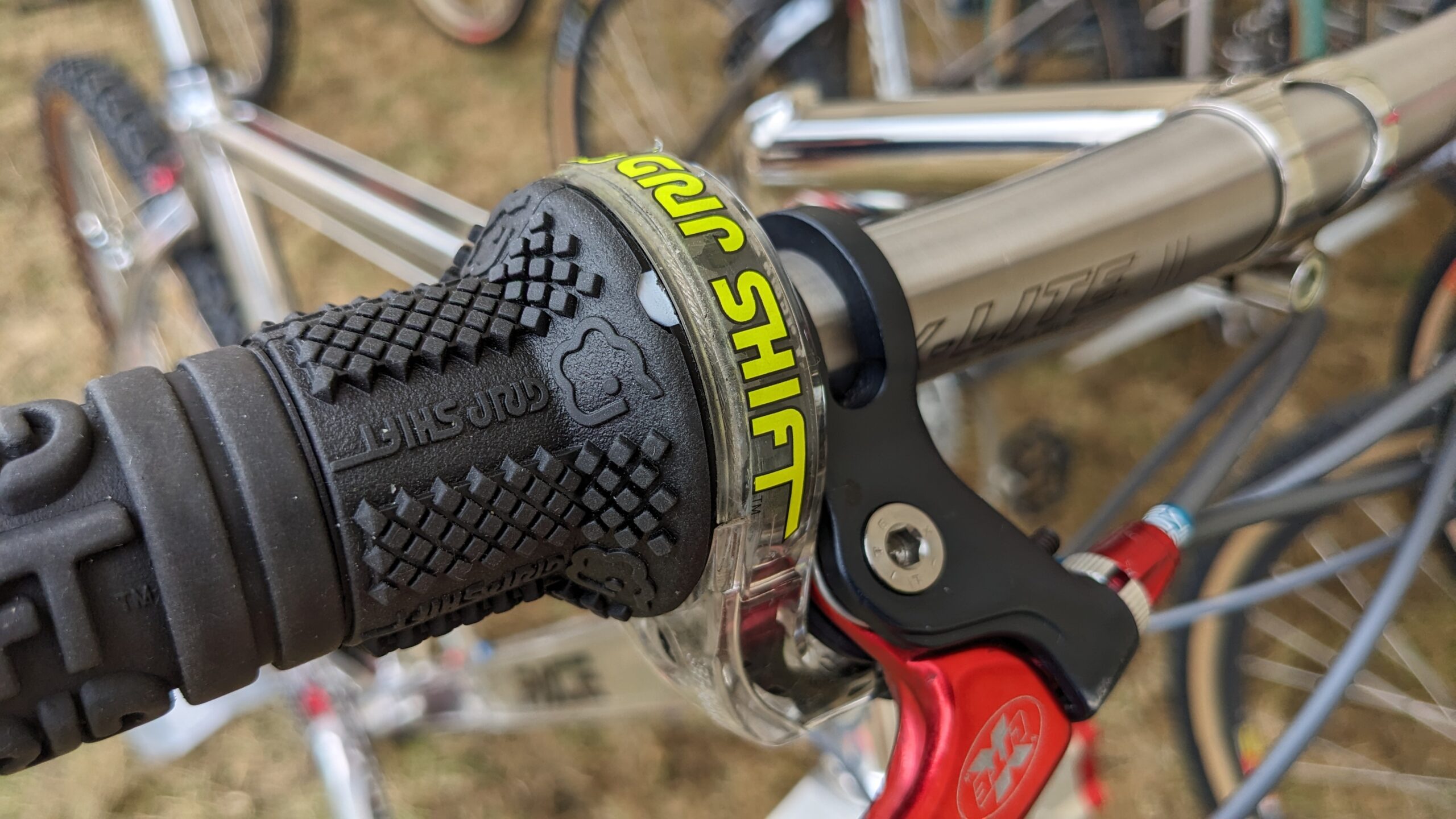
Threaded Headsets
Threaded mountain bike headsets were phased out in favor of threadless headsets due to their simplicity, strength, and ease of use. Threadless designs eliminate the need for precise threading on the fork steerer, making production simpler and the bike more durable. They also allow for easier adjustments and maintenance, with a stem that can be swapped or adjusted without cutting the steerer tube. Additionally, threadless headsets are lighter and provide better handlebar stiffness, improving bike control. These advantages, along with industry-wide standardisation, made threaded designs as good as obsolete.
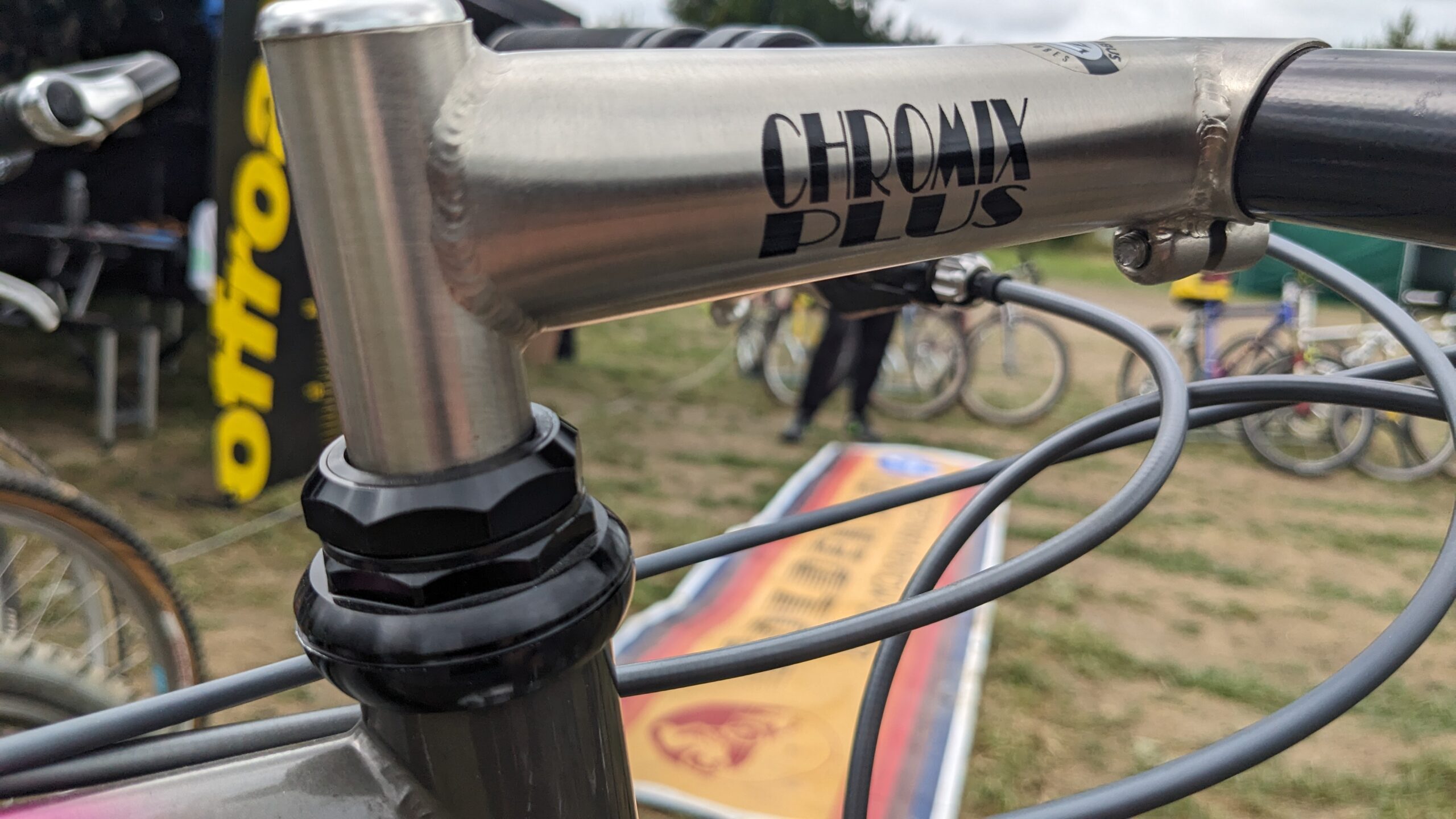
Bar ends
Bar ends were designed to give a more comfortable hand position when climbing. In the 90’s, handlebars were really narrow so they kind of worked ok. With a shift towards wider handlebars, which provide better control and stability and the evolution of more aggressive riding styles, Bar ends are all but done and dusted (with the occasional exception of Lachlan Mortan) as with most things 1990’s, they looked pretty cool 😉

Girvin Forks
I was always quietly intrigued by this design but even as a youngster, they never really looked more appealing than the alternatives at the time from RockShox, Pace, Marzocchi, Manitu and RST. Some of the comments that I’ve read online about their performance make for an amusing read…
“One of the worst fork designs of all time”
“They sucked pretty badly in terms of damping and lateral/torsional stiffness.”
“I used to call those forks ‘StapleGuns’. Many of the itterations had no provisions at all for rebound damping. Litterally dangerous at any speed. Other than that, they had no tortional stiffness to speak of.”
It is therefore no surprise that Girvan forks faded away and consigned themselves into the history books.
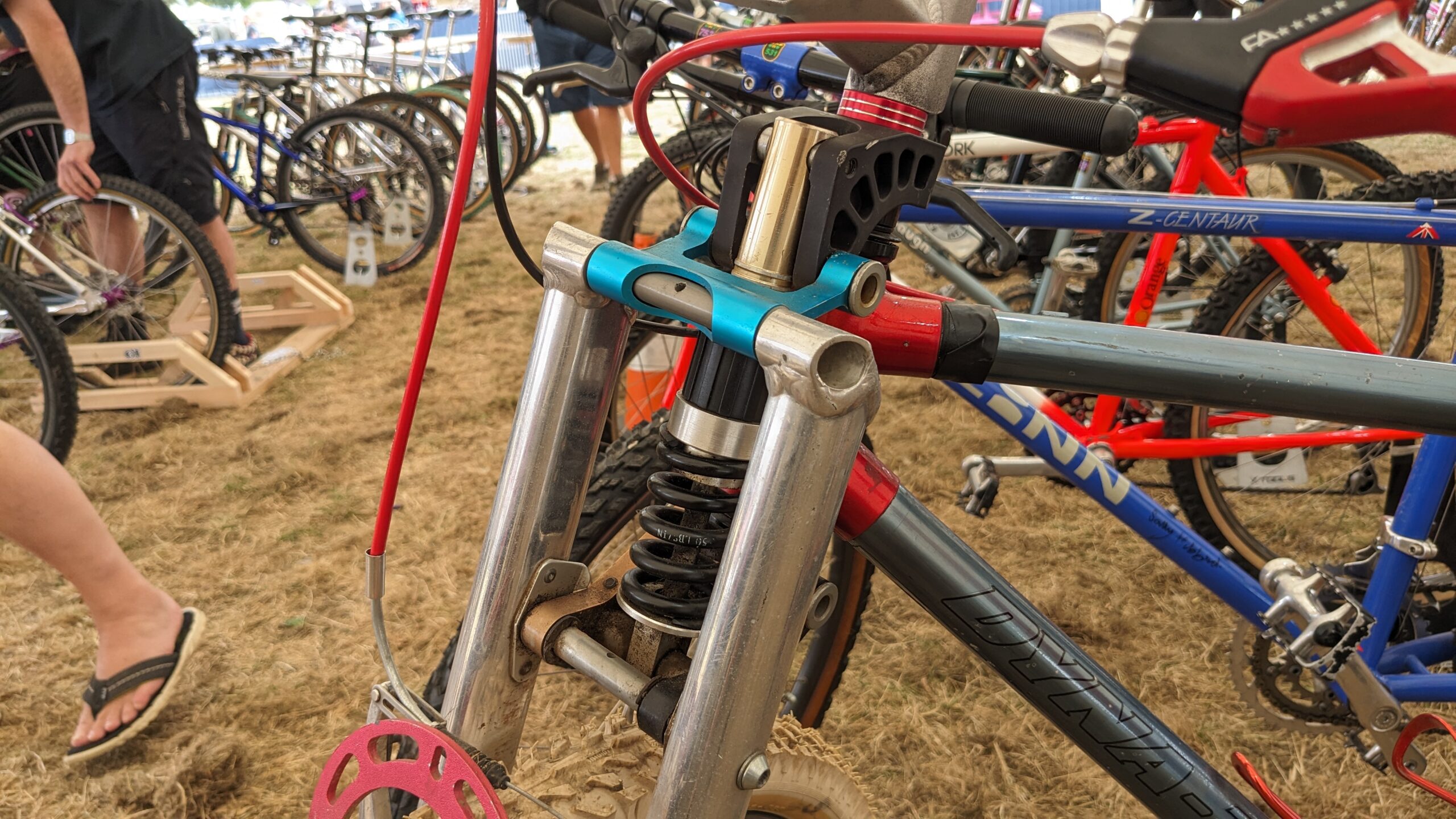
Manitou Three rear suspension
The 1993 Marin Pine Trail FRS featured rear suspension forks as part of an early approach to full-suspension mountain bike design. At that time, mountain biking technology was still evolving, and manufacturers were experimenting with different ways to improve comfort and control on rough terrain. While this specific rear suspension design was a novel approach at the time, it was eventually replaced by more advanced and efficient suspension systems as technology progressed. I shall award this design as the most retro and outdated tech on our list!
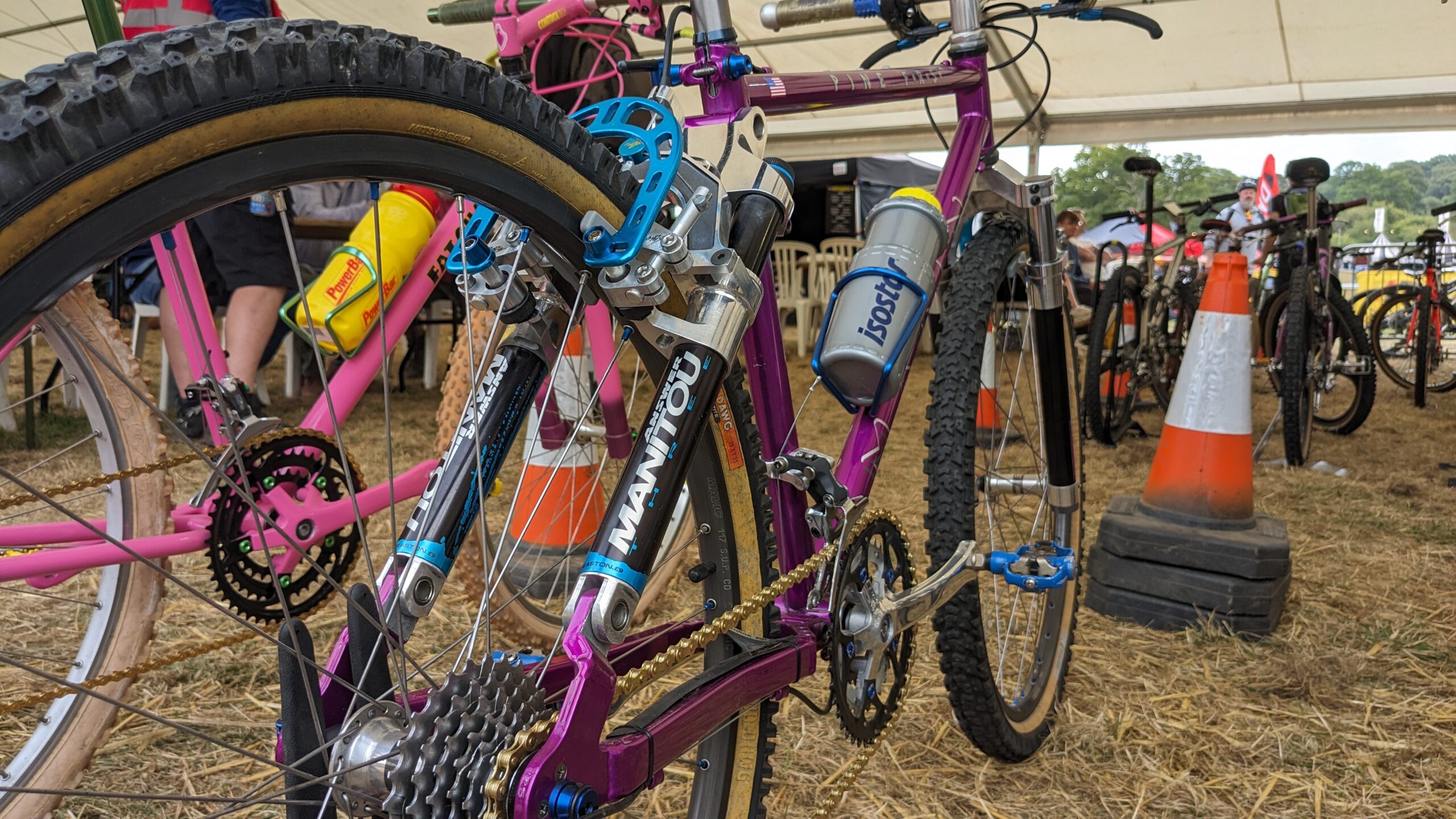
There’s bound to be loads that we have missed. Let us know in the comments!










